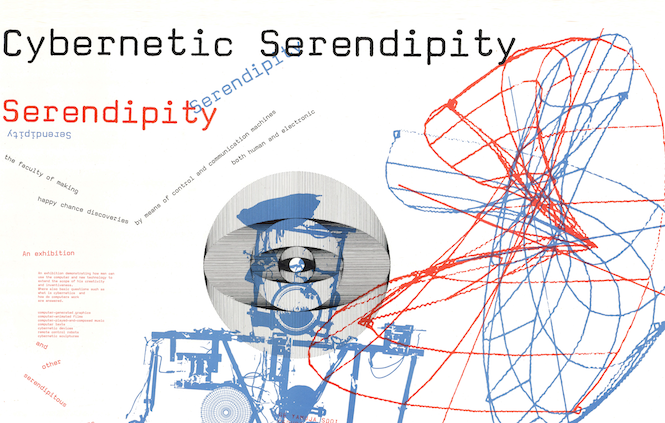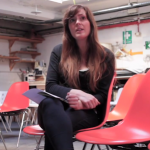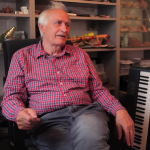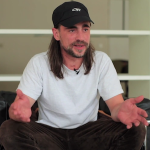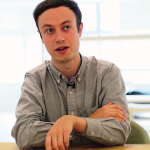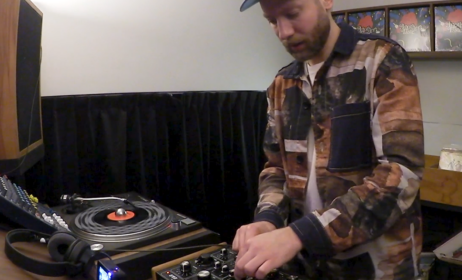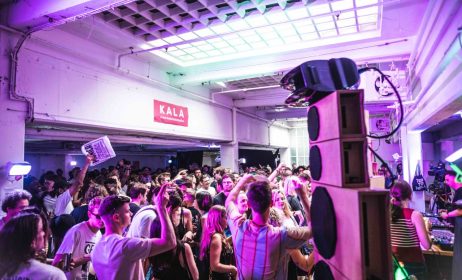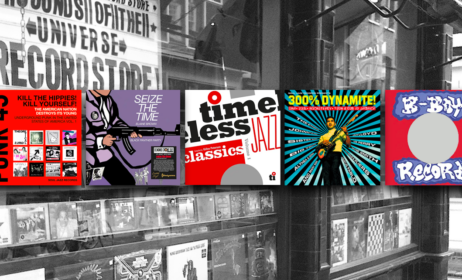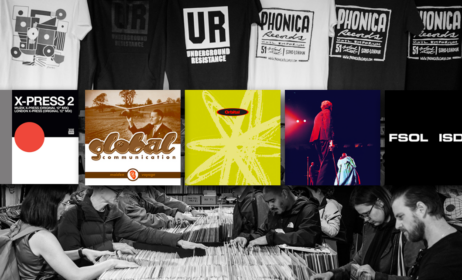Published on
October 15, 2014
Category
Features
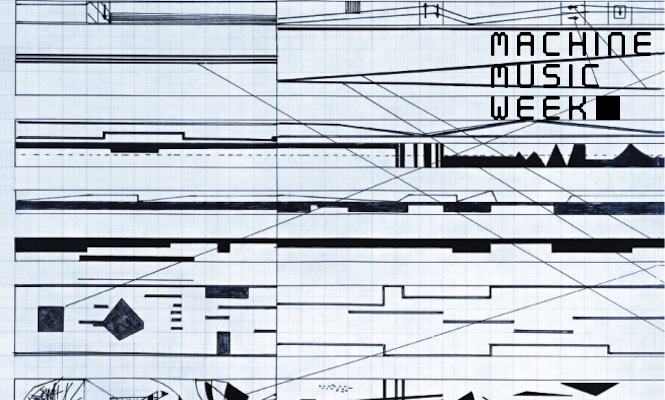
On the exhibition:
Juliette Desorgues: Cybernetic Serendipity was a real landmark exhibition that was staged at the ICA in 1968. It was curated by the then assistant director Jasia Reichardt who is now curating the Reading Room display that we have opening. It was a multidisciplinary international exhibition that brought together poets, artists, computer scientists and musicians. That multi-disciplinary aspect hadnʼt really been done before, bringing science and art together under one roof, there was no real hierarchy between the two. I think it was really the first exhibition that examined that crossover between science and art at a time when computers were still actually a rare thing.So there was a real excitement of technology that was fed through within the arts. It was very much a utopian view of the two being brought together, a real celebration.
The exhibition was hugely popular, the press coverage was tremendous and the ICA had huge numbers of visitors coming through the doors. And it wasnʼt just people from the art world, I think thatʼs quite important, it was actually all kinds of audiences, children and adults. The work was really engaging, there was some really interactive work that engaged younger audiences as well, so it was hugely popular.
Peter Zinovieff: I guess what happened was that Jasia Reichardt contacted me and said would I like to do an exhibit in a robotics exhibitions. And at that time I’d just really put together a computer music studio. It was a very complicated studio and the first computer used in electronic music and then I talked to my engineer about what we could do that was very simple. So we came up with this idea that if somebody could whistle a tune then the computer might be able to analyse this tune and do variations on it, and indeed if it was very clever it would anticipate what the tune was and play it back early. So that’s what we set out to do.
So we made a device which detected zero crossings, it was just a very simple time detector of a limited frequency and then in real time the computer actually did computer variations on it. So in a way it was technically incredibly advanced. One would be very hard pushed to do it now actually.
It was night and day programming at the ICA, because not only were the things diverse bits of equipment but behind the scenes there must have been at least a kilometer of wiring and hundreds of hours of soldering terrible joints together. I’m very bad at it, but there were tons of solder joints and huge problems from hum and other bits of machinery interfering with it.
And also the machinery was quite big, I think it was like three 19 inch racks with lots of layers of machinery in it and this big old computer with 4K of memory – a really tiny tiny amount of memory and no visual display, so no monitor or anything.
Russell Haswell: In a way Cybernetic Serendipity kicked it all off because that was it, it was the sum of the research that was going on a the time and obviously the curator had a good familiarity with what was out there, and that’s why the names are fairly familiar even to somebody that wasn’t really preoccupied with this area of activity.
One of the things that as an artist I was always interested in was the past, and being a 70’s kid things that happened just prior to the 70’s seemed to be quite an interesting period in the arts, whether it’s visual art. Multi-media became a subgenre of the visual arts and that also contained music and computer music.
In the mid 90’s, I started to go to events like Ars Electronica, where you get this collision of media and art and technology, and it’s quite hard to go the Ars Electronica Centre in Linz without being over familiar with this exhibition and the consequences of the exhibition and the artists or musicians within the it.
There haven’t been many exhibitions like this, but you could argue that somewhere like the Ars Electronica has been an institution that is almost based on Cybernetic Serendipity and it is its own building and it stands there and is a constant Cybernetic Serendipity, there’s always a show on there.
Yuri Pattison: The thing you have to remember is that it was such a multi-media show. It had this cacophony of video, screen-based stuff. And the holy grail, and one element that really fleshed out the multi-media element of the show was the record, which was sort of the multi-media companion to the catalogue.
I think the show is really important for that reason, it wasn’t a pure art context show and that’s why it continues to be successful. It looked at this very broad topic and all the elements of that topic are still relevant today, more than ever, but looked at in a way that really broke it down to the fundamental components. So you have corporate projects, you have scientific projects, you have people who span being an artist and a scientist, or working at a university, you have all these elements.
The music side is really interesting because they actually had playback of the music in the space, like reel to reel tapes that you could listen to, so the record is only a small selection of those elements but it really opens up the possibilities of the exhibition. It must have been an incredible spectacle. The actual images of the show look very futuristic, they look like 2001: A Space Odyssey, and it was the first big show in the ICA’s big space in the Mall as well, so it has that real freshness to it, looking forward I guess to this new age.
At the same time I think the sensibilities of the show and the curation of the show were very much rooted in fact and how people were using this technology and if you read the catalogue and you read interviews at the time with these artists, they’re speaking form a very practical point of view. You can really get on their level because they’re not being incredibly aspirational about the technology, they’re not elevating it to the point of science fiction, they’re talking about it from a point where it is practical, it is a tool and it has changed their outlook on making work and making music.

